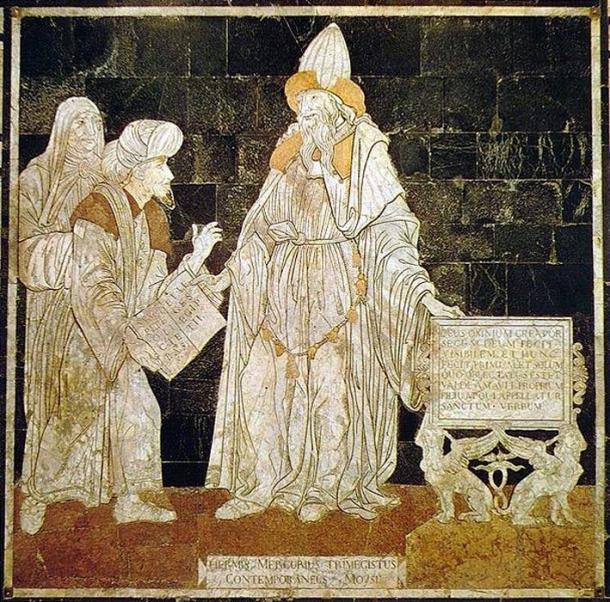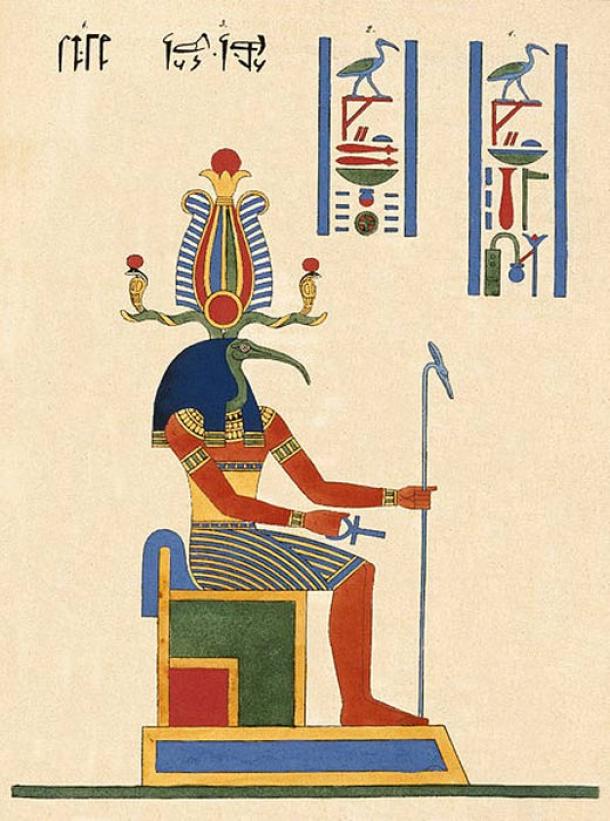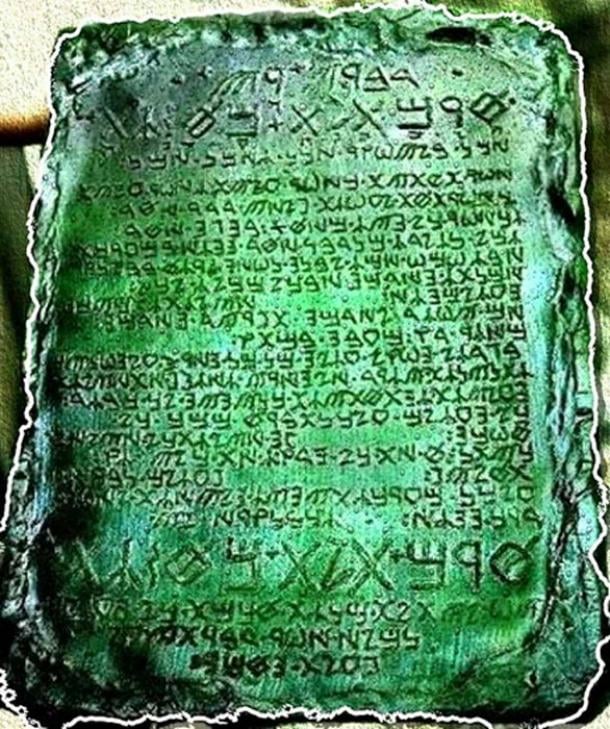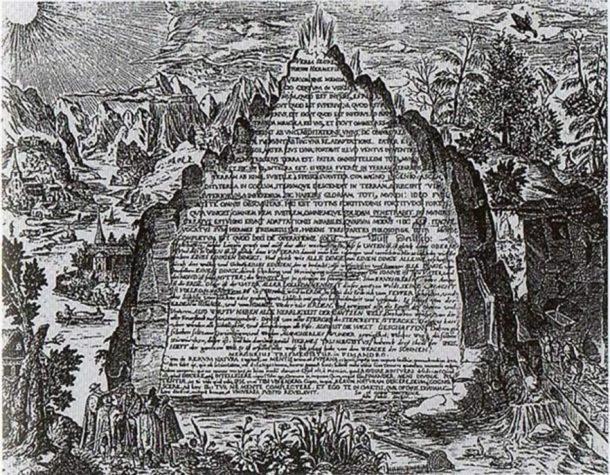The origins of Western alchemy can be traced back to Hellenistic Egypt, in particular to the city of Alexandria. One of the most important characters in the mythology of alchemy is Hermes Trismegistus (Hermes the Thrice-Great). The name of this figure is derived from the Egyptian god of wisdom, Thoth, and his Greek counterpart, Hermes. The Hermetica, which is said to be written by Hermes Trismegistus, is generally regarded as the basis of Western alchemical philosophy and practice. In addition, Hermes Trismegistus is also believed to be the author of the Emerald Tablet.
Legends of the Emerald Tablet
The Emerald Tablet is said to be a tablet of emerald or green stone inscribed with the secrets of the universe. The source of the original Emerald Tablet is unclear; hence it is surrounded by legends. The most common story claims that the tablet was found in a caved tomb under the statue of Hermes in Tyana, clutched in the hands of the corpse of Hermes Trismegistus himself.

Hermes Trismegistus. ( Public Domain )
And the creator of the Emerald Tablet has been provided in myth as the Egyptian god Thoth, who Armando Mei writes “divided his knowledge into 42 plates of emerald, codifying the great scientific principles ruling the Universe. The legend tells that after the gods’ fall, the Hermetic tablets were cleverly hidden so that no human being might find them. Only Thoth, on his return to that dimension, was able to recover the mysterious book.”

Thoth. ( Brooklyn Museum )
Another legend suggests that it was the third son of Adam and Eve , Seth, who originally wrote it. Others believed that the tablet was once held within the Ark of the Covenant . Some even claim that the original source of the Emerald Tablet is none other than the fabled city of Atlantis.
Adventist Adventurer Claimed to Have Found Ark of the Covenant Beneath Crucifixion Site The Book of Abramelin the Mage, Esoteric Grimoire of Kabbalistic Knowledge Sir Isaac Newton’s Secret Quest for the God Engine Spreading Stories of the Emerald Tablet
While various claims have been made regarding the origins of the Emerald Tablet, as yet no verifiable evidence has been found to support them. The oldest documentable source of the Emerald Tablet’s text is the Kitab sirr al-haliqi (Book of the Secret of Creation and the Art of Nature), which was itself a composite of earlier works.
This was an Arabic work written in the 8th century AD and attributed to ‘Balinas’ or Pseudo-Apollonius of Tyana. It is Balinas who provides us with the story of how he discovered the Emerald Tablet in the caved tomb. Based on this Arabic work, some believe that the Emerald Tablet was also an Arabic text and written between the 6th and 8th centuries AD, rather than a piece of work from Antiquity, as many have claimed.
While Balinas claimed that the Emerald Tablet was written originally in Greek, the original document that he purportedly possessed no longer exists, if indeed it existed at all. Some say the text burned up in the Library of Alexandria . Nevertheless, Balinas’ version of the text itself quickly became well-known, and has been translated by various people over the centuries.
For instance, an early version of the Emerald Tablet also appeared in a work called the Kitab Ustuqus al-Uss al-Thani (Second Book of the Elements of the Foundation), which is attributed to Jabir ibn Hayyan. It would, however, take several more centuries before the text was accessible to Europeans. In the 12th century AD, the Emerald Tablet was translated into Latin by Hugo von Santalla.
Who Really Built the Pyramids of Giza? Thoth’s Enigmatic Emerald Tablets May Provide the Answer Ten incredible texts from our ancient past Thoth Hermes Trismegistus and his Ancient School of Mysteries

A reconstruction of what the Emerald Tablet is believed to have looked like. ( Crystalinks)
What’s Written on the Emerald Tablet?
The Emerald Tablet would become one of the pillars of Western alchemy. It was a highly influential text in medieval and Renaissance alchemy, and probably still is today. In addition to translations of the Emerald Tablet, numerous commentaries have also been written regarding its contents.
For instance, a translation by Isaac Newton was discovered among his alchemical papers. This translation is currently being held in King’s College Library in Cambridge University. Other notable researchers of the Emerald Tablet include Roger Bacon , Albertus Magnus, John Dee , and Aleister Crowley . And today knowledge of the legendary Emerald Tablet (at least one interpretation of it ) is reaching new audiences with its presence in the surreal German-language series Dark.

An imaginative 17th century depiction of the Emerald Tablet from the work of Heinrich Khunrath, 1606. ( Public Domain )